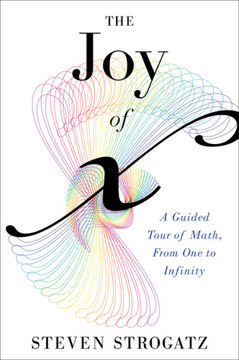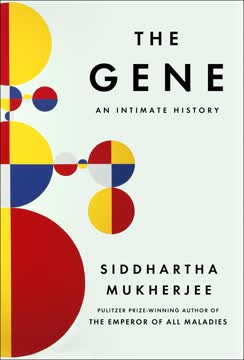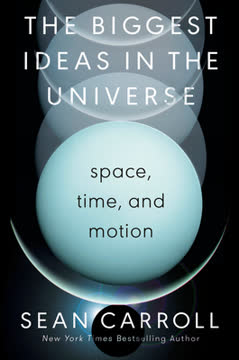Key Takeaways
1. Oxygen: The paradoxical molecule that sustains and ages us
Oxygen is hailed as the Elixir of Life — a wonder tonic, a cure for ageing, a beauty treatment and a potent medical therapy. It is also purported to be a fire hazard and a dangerous poison that will kill us in the end.
Life-giving and life-taking. Oxygen is essential for life, enabling complex organisms to extract energy from food through cellular respiration. However, it's also a reactive molecule that can damage cells over time. This paradox is at the heart of understanding aging and longevity.
Evolutionary adaptation. Life on Earth has evolved numerous mechanisms to harness oxygen's power while mitigating its dangers. These include:
- Antioxidant enzymes like superoxide dismutase and catalase
- Cellular compartmentalization (e.g., mitochondria)
- DNA repair mechanisms
Historical perspective. The discovery of oxygen and its role in life processes was a pivotal moment in scientific history, involving scientists like Joseph Priestley, Antoine Lavoisier, and others. Understanding oxygen's dual nature has been crucial in fields ranging from medicine to space exploration.
2. Free radicals: The double-edged sword of cellular metabolism
If we know that free radicals are produced, or that they cause damage proportional to their rate of production. The problem with the free-radical theory, from the very beginning, was that correlations say nothing about causality.
Inevitable byproducts. Free radicals are produced as a natural consequence of cellular metabolism, particularly in the mitochondria. While they can cause damage to DNA, proteins, and lipids, they also play important roles in cell signaling and immune responses.
The rate of living theory. This theory suggests that organisms with higher metabolic rates age faster due to increased free radical production. However, exceptions like birds and bats challenge this simplistic view.
Oxidative stress and aging. The balance between free radical production and antioxidant defenses is crucial:
- Excessive free radicals lead to oxidative stress
- Chronic oxidative stress is associated with aging and age-related diseases
- However, some level of oxidative stress may be beneficial, triggering adaptive responses
3. Antioxidants: Nature's defense against oxidative stress
There is still no evidence that antioxidant supplements increase maximum lifespan. Instead, a balanced diet probably corrects for vitamin deficiencies that might otherwise cut short our lives.
Complex network. Antioxidants are not just dietary supplements but a sophisticated system of molecules and enzymes that work together to neutralize free radicals and repair oxidative damage.
Dietary vs. endogenous antioxidants. While fruits and vegetables provide important antioxidants, the body also produces its own, such as:
- Glutathione
- Coenzyme Q10
- Lipoic acid
The antioxidant paradox. Excessive antioxidant supplementation may be harmful:
- It can interfere with beneficial oxidative stress responses
- May suppress important cellular signaling pathways
- Could potentially increase cancer risk in some cases
4. Mitochondria: The powerhouses and timekeepers of cells
The critical point is that the survival of bacterial life involves death on a massive scale. In 24 hours, a single bacterium can produce 248, or 1016, cells, with a total biomass of about 30 kilograms. Clearly, such exponential growth cannot be sustained.
Evolutionary origin. Mitochondria were once free-living bacteria that formed a symbiotic relationship with early eukaryotic cells. This endosymbiosis event was crucial for the evolution of complex life.
Energy and aging. Mitochondria are central to cellular energy production and aging:
- They generate most of the cell's ATP through oxidative phosphorylation
- They are a major source of free radicals
- Mitochondrial DNA is particularly vulnerable to oxidative damage
Mitochondrial theory of aging. This theory proposes that accumulated damage to mitochondrial DNA and proteins leads to cellular dysfunction and aging. However, the relationship is complex and not fully understood.
5. Evolution of longevity: Balancing reproduction and survival
If senescence is not necessary to life as such, and has not always been with us, then presumably it has evolved. If senescence evolved, then it must be determined at least partly by genes, as only traits that are genetically determined can evolve and be passed on to the next generation.
Trade-offs. Evolutionary theory suggests that longevity is balanced against reproductive success. Resources allocated to survival and repair come at the cost of reproduction and vice versa.
Selection pressure. The force of natural selection declines with age, as genes affecting late-life traits have less impact on reproductive success. This leads to the accumulation of deleterious mutations that act late in life.
Adaptive aging. In some species, programmed death may be advantageous:
- Clearing space for offspring
- Reducing competition for resources
- Maintaining genetic diversity in populations
6. Calorie restriction: A potential key to extending lifespan
Calorie restriction can increase the lifetime energy potential — we get more heartbeats. For male rats, this increase is in the order of 50 per cent.
Universal effect. Calorie restriction extends lifespan in a wide range of organisms, from yeast to primates, suggesting a conserved mechanism.
Metabolic adaptation. Calorie restriction triggers numerous physiological changes:
- Lowered metabolic rate
- Reduced inflammation
- Improved insulin sensitivity
- Enhanced stress resistance
Hormesis. The benefits of calorie restriction may be due to hormesis - a beneficial response to low-level stress that strengthens the organism's ability to cope with greater challenges.
7. The disposable soma theory: Why we age and die
The disposable soma theory argues that longevity is a trade-off between the resources committed to reproduction and those committed to bodily maintenance.
Resource allocation. This theory proposes that organisms allocate limited resources between maintaining the body (soma) and reproduction. The optimal balance depends on environmental factors and evolutionary history.
Evolutionary perspective. The theory explains why:
- Species with high mortality rates in the wild tend to age faster
- Long-lived species often have delayed sexual maturity and lower reproductive rates
Implications for human aging. Understanding this trade-off could lead to interventions that:
- Extend healthspan by improving somatic maintenance
- Potentially increase lifespan by shifting resource allocation
8. DNA damage and repair: The constant battle within our cells
We are left with the following conclusions. If senescence is not necessary to life as such, and has not always been with us, then presumably it has evolved.
Ongoing threat. DNA is constantly under attack from both endogenous (e.g., free radicals) and exogenous (e.g., UV radiation) sources. This damage, if left unrepaired, can lead to mutations, cellular dysfunction, and aging.
Repair mechanisms. Cells have evolved sophisticated DNA repair systems:
- Base excision repair
- Nucleotide excision repair
- Double-strand break repair
- Mismatch repair
Aging and repair. The efficiency of DNA repair mechanisms declines with age, contributing to genomic instability and age-related diseases. Enhancing these repair systems could potentially slow aging.
9. Telomeres and cellular senescence: Not the fountain of youth
In short, it seems fair to say that, for all the hullabaloo, telomerase does not hold the secret of eternal life.
Cellular clock. Telomeres, the protective caps at the ends of chromosomes, shorten with each cell division. This shortening serves as a cellular clock, limiting the number of times a cell can divide.
Replicative senescence. When telomeres become critically short, cells enter a state of senescence or programmed cell death. This mechanism helps prevent cancer but also contributes to aging.
Telomerase and immortality. While telomerase can extend telomeres and cellular lifespan:
- It's not a simple solution to aging
- Many cells in the body don't divide and aren't limited by telomere length
- Activating telomerase could increase cancer risk
10. Gender differences in aging: The role of hormones and metabolism
As Tom Kirkwood and Steven Austad have argued, the power of this effect is exemplified by the existence of the menopause.
Evolutionary perspective. The different reproductive strategies of males and females have led to differences in aging patterns:
- Females often live longer but experience a sharp decline in fertility (menopause)
- Males maintain fertility longer but often have shorter lifespans
Hormonal influences. Sex hormones play a crucial role in aging:
- Estrogen has protective effects on the cardiovascular system and bone density
- Testosterone influences muscle mass and bone density
Metabolic differences. Gender-specific metabolic traits affect aging:
- Females generally have lower metabolic rates and produce fewer free radicals
- Males often have higher muscle mass, influencing overall metabolism and aging
These differences highlight the complex interplay between genetics, hormones, and environment in the aging process, emphasizing the need for gender-specific approaches to longevity research and interventions.
Last updated:
FAQ
What's Oxygen: The Molecule That Made the World about?
- Exploration of Oxygen's Role: The book examines oxygen's dual nature as essential for life and a contributor to death, shaping life on Earth over billions of years.
- Historical Context: Nick Lane provides a narrative tracing the discovery of oxygen and its implications, from early microbial life to complex organisms.
- Interconnection of Life and Oxygen: It connects various scientific disciplines, showing how oxygen influences energy production, health, disease, and aging.
Why should I read Oxygen: The Molecule That Made the World?
- Engaging Scientific Writing: Lane's writing is praised for making complex topics accessible and engaging for a general audience.
- Interdisciplinary Insights: The book bridges biology, chemistry, and geology, offering a comprehensive understanding of oxygen's impact on life.
- Relevance to Modern Issues: It addresses contemporary concerns about health, aging, and environmental issues, making it relevant to science enthusiasts.
What are the key takeaways of Oxygen: The Molecule That Made the World?
- Oxygen as a Double-Edged Sword: While vital for life, oxygen also poses risks, contributing to aging and diseases.
- Evolutionary Significance: The rise of atmospheric oxygen was crucial for the evolution of complex life forms, including the Cambrian explosion.
- Antioxidants and Health: The book challenges the notion that consuming antioxidants can significantly extend life, emphasizing a balanced approach.
What are the best quotes from Oxygen: The Molecule That Made the World and what do they mean?
- “Oxygen, an essential element of life, is also an agent of death.”: This highlights the paradox of oxygen's role in sustaining and threatening life.
- “The poison is in the dose.”: Illustrates that while oxygen is necessary, excessive exposure can lead to toxicity and damage.
- “Life, Death and Oxygen: Lessons From Evolution on the Future of Ageing.”: Suggests that understanding oxygen's historical role can provide insights into health and aging.
How did the discovery of oxygen impact our understanding of life?
- Historical Controversy: The book discusses the contentious history of oxygen's discovery, involving figures like Joseph Priestley and Antoine Lavoisier.
- Shift in Scientific Paradigms: Realizing oxygen's role in combustion and respiration transformed scientific thought and understanding of metabolism.
- Foundation for Modern Biology: Lane argues that the discovery laid the groundwork for modern biology, influencing evolutionary theories.
What is the free radical theory of aging mentioned in Oxygen: The Molecule That Made the World?
- Oxidative Damage: The theory posits that free radicals, reactive forms of oxygen, cause cellular damage over time, leading to aging.
- Role of Antioxidants: Antioxidants can neutralize free radicals, but excessive supplementation may not significantly extend lifespan.
- Implications for Health: Understanding this theory can inform lifestyle choices related to diet and health, emphasizing balance.
How does Oxygen: The Molecule That Made the World connect oxygen to evolution?
- Oxygen and Multicellularity: Rising oxygen levels were crucial for the evolution of multicellular organisms, enabling complex life forms.
- Cambrian Explosion: Lane links increased atmospheric oxygen to the Cambrian explosion, marked by rapid life diversification.
- Environmental Changes: Geological events, like snowball Earth, influenced oxygen levels and evolutionary pathways.
What evidence does Lane provide for high oxygen levels during the Carboniferous period?
- Fossil Record: The abundance of fossilized giant insects, like the Bolsover dragonfly, suggests higher oxygen levels supported larger body sizes.
- Coal Formation: Massive burial of organic matter as coal during the Carboniferous contributed to elevated oxygen levels.
- Isotope Analysis: Studies of carbon and strontium isotopes indicate fluctuations in oxygen levels, supporting a high-oxygen atmosphere.
How does Oxygen: The Molecule That Made the World address the paradox of oxygen being both essential and toxic?
- Oxygen's Dual Nature: Oxygen is necessary for life processes but can lead to oxidative stress and cellular damage.
- Historical Context: Early life forms adapted to oxygen, developing mechanisms to cope with its toxic effects.
- Modern Implications: Understanding this paradox can inform health practices and antioxidant use in diets.
What role do antioxidants play according to Oxygen: The Molecule That Made the World?
- Defense Against Free Radicals: Antioxidants neutralize free radicals, reducing oxidative damage to cells.
- Dietary Sources: Consuming fruits and vegetables rich in antioxidants is emphasized for overall health.
- Caution Against Over-Supplementation: Excessive antioxidant supplementation may not provide expected benefits and could be harmful.
How does Oxygen: The Molecule That Made the World relate to current environmental issues?
- Impact of Oxygen Levels: Fluctuations in atmospheric oxygen levels can affect ecosystems and biodiversity.
- Human Influence: Human activities alter oxygen levels, with potential health and environmental consequences.
- Call for Awareness: Lane encourages considering oxygen's historical significance and preserving the environment for future generations.
What is the mitochondrial theory of ageing as discussed in Oxygen: The Molecule That Made the World?
- Mitochondrial Damage: Damage to mitochondrial DNA from free radicals leads to a decline in function, contributing to aging.
- Free Radical Leakage: Mitochondria produce energy but leak free radicals, causing cellular damage and accelerating aging.
- Implications for Longevity: Improving mitochondrial efficiency could extend lifespan and reduce age-related diseases.
Review Summary
Oxygen is praised as a comprehensive exploration of oxygen's role in Earth's history and biology. Readers appreciate Lane's synthesis of diverse scientific fields, from geology to biochemistry. The book covers oxygen's impact on evolution, aging, and diseases. While some find it challenging, many commend its depth and engaging writing. Critics note speculative elements and potential oversimplifications. The book's discussions on antioxidants, mitochondria, and aging theories are highlighted. Overall, it's considered an informative, thought-provoking read for those interested in science and biology.
Similar Books
Download PDF
Download EPUB
.epub digital book format is ideal for reading ebooks on phones, tablets, and e-readers.













